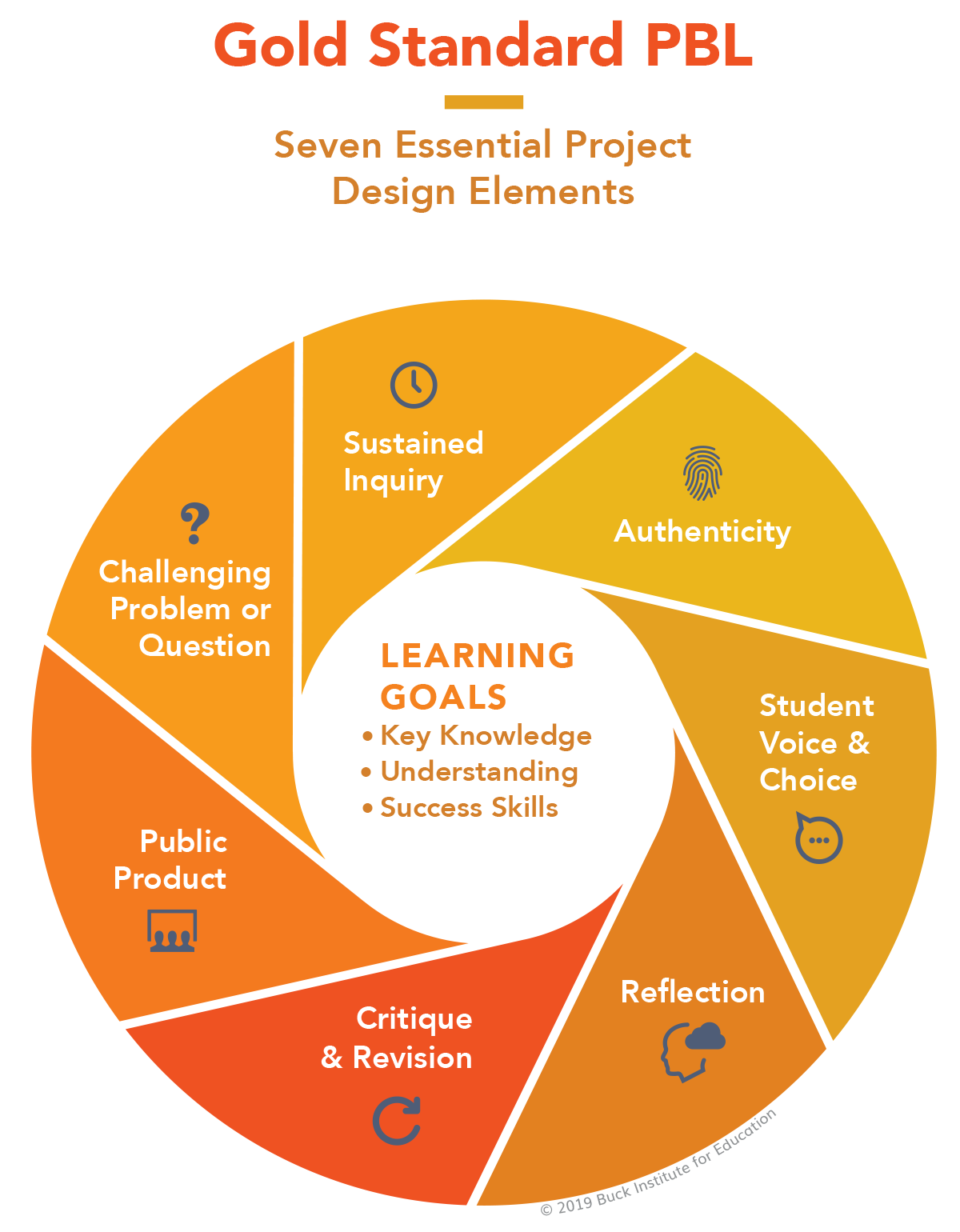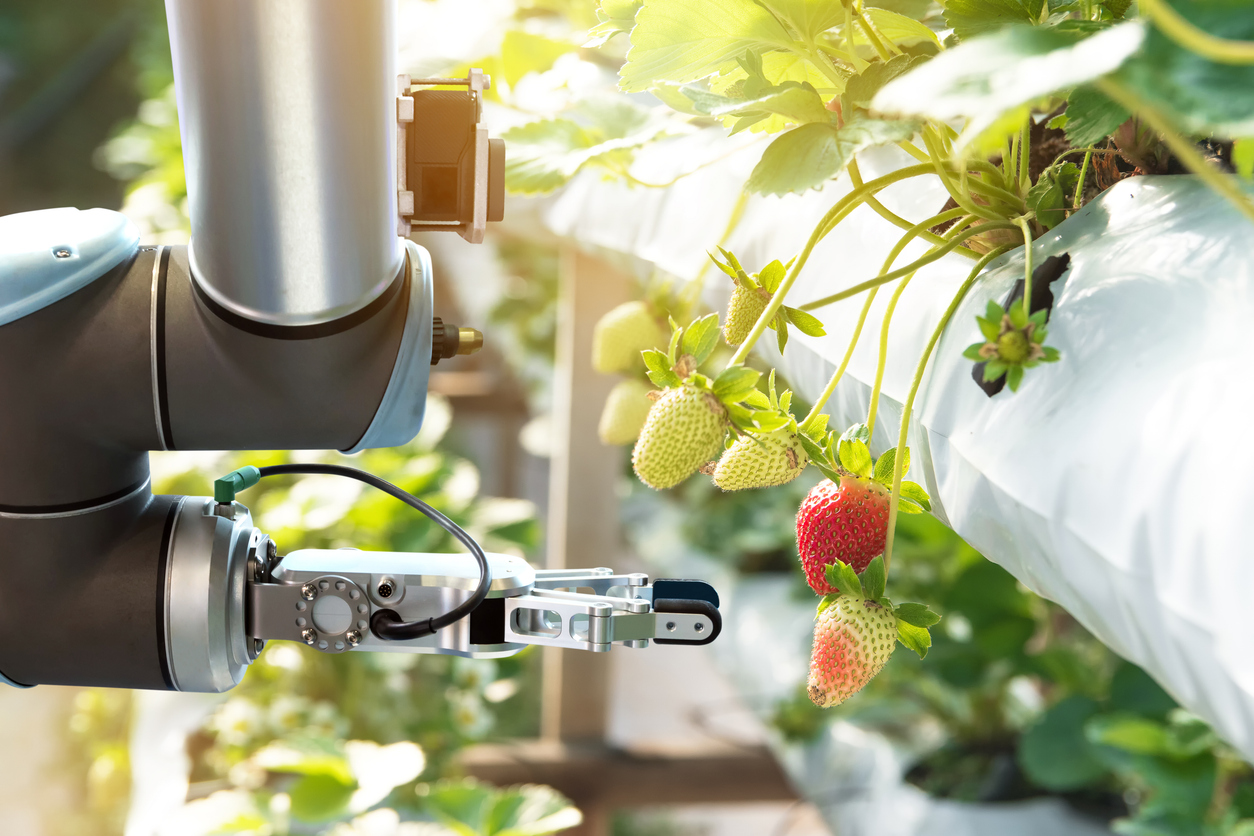Background Agricultural Connections
 |
Robots Wanted! is a Project-Based Learning (PBL) plan. PBL is a teaching method in which students gain knowledge and skills by working for an extended period of time to investigate and respond to an authentic, engaging, and complex question, problem, or challenge.1 |

Essential Elements of PBL
A quality PBL experience requires seven essential elements.
- Challenging Problem or Question: The project is framed by a meaningful problem to be solved or a question to answer, at the appropriate level of challenge.
- Sustained Inquiry: Students engage in a rigorous, extended process of posing questions, finding resources, and applying information.
- Authenticity: The project involves real-world context, tasks and tools, quality standards, or impact, or the project speaks to personal concerns, interests, and issues in the students' lives.
- Voice and Choice: Students make some decisions about the project, including how they work and what they create.
- Reflection: Students and teachers reflect on the learning, the effectiveness of their inquiry and project activities, the quality of student work, and obstacles that arise and strategies for overcoming them.
- Critique and Revision: Students give, receive, and apply feedback to improve their process and products.
- Public Product: Students make their project work public by explaining, displaying, and/or presenting it to audiences beyond the classroom.2
Farm Labor and Mechanization
We live in a highly mechanized and sophisticated world. While agriculture has seen numerous advances in technology to decrease labor in the farm-to-fork process of food in the last 100 years, there is still a large number of processes that are performed manually by skilled laborers.
Fruit and vegetable crops in the United States are among the most labor-intensive.1 Fruit and vegetable producers are highly dependent on large crews of skilled laborers, especially during harvest when precise timing is critical. An early or delayed harvest can significantly decrease the quality of the food product. Many challenges exist for farm producers to secure the labor necessary to successfully grow and harvest the food that we eat. A few challenges include:
- Many farm jobs are short-term or seasonal. For example, many crops are harvested only once per year. In this case, farmers need a large number of laborers to work for a short period of time until the harvest is complete. The timing for harvest is also impacted by changing weather and can be sped up or delayed with little notice.
- Many jobs include work that is physically demanding and requires lifting heavy loads and performing repetitive tasks in the hot sun, rain, humidity, or other uncomfortable environments.
- Relatively low wages, especially in comparison to the hard work performed, are prevalent in agriculture. Farms are businesses. In order to be economically sustainable, they must keep their production costs below their sale price or the farm will fail.
- Because many agricultural workers are natives of countries outside of the United States, immigration reform impacts the availability of workers in agriculture. Although the working conditions are difficult and the pay is low, farm work in the United States can be an improvement to the situation of some immigrant workers.1 While immigration is a complicated matter, consider the dependence we currently have on migrant labor. Watch Will the Last Farmer in America Please Turn Out the Light? where Nicole Jolly, host of True Food TV, shares her perspective of hard working farm laborers after visiting dozens of farms across the U.S. filming episodes of How Does it Grow?
Technological innovations in agriculture abound. Tractors, trucks, farm implements, and harvesters have already made big steps in some areas of agriculture to decrease manual labor and increase the capacity of farmers to produce food for a growing population. These examples represent machines. They repeat predetermined motions and cannot respond to changes in the external environment without an operator intervening. Robots can perform repeated motions just like a machine, but can also be programmed or given specific instructions and scenarios. For example, a robot can be programmed to only pick a strawberry when it is a specific size and color.
There are still many areas of agriculture where technology has not yet surpassed the precision of human labor. Fruit and vegetable farming is especially labor intensive. Many of the foods we purchase regularly in the produce aisle were planted and harvested by hand, requiring large crews of workers. The quest for more mechanization has already begun, but challenges exist. Some crops do not ripen all at once, so a worker's trained eye and hand are necessary to look for precise coloring and firmness to indicate readiness to pick. Another challenge is to create a machine that picks the fruit or vegetable without damaging the bush, vine, or tree it was grown on.
 |
This PBL plan introduces students to the following career opportunities: agricultural technician, agricultural engineer, design engineer, mechanical engineer, electrical engineer, software developer, automation technician, business manager, general and operations manager. Explore the career profiles to discover job outlooks, education requirements, and average salaries.
|

